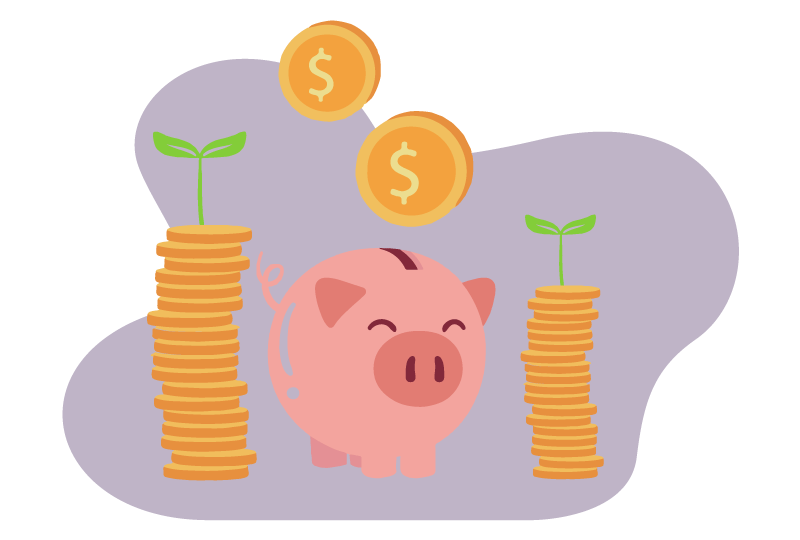RESP
Quotes in Minutes!
Registered Education Savings Plan (RESP) is designed to help prepare for your child’s future and post-secondary education.
What is an RESP?
An RESP is a convenient and flexible way to save for a child’s future post-secondary education. You’ll be able to rest assured knowing your child’s future education is secured. Investment income generated in an RESP is sheltered from tax as long as it remains in the plan. Government grants may be available to student beneficiaries who qualify to help savings grow. There are no annual fees outside of the Management Expense Ratio (MER).
A segregated fund contract has protective features. This includes death benefits and maturity guarantees. When money is withdrawn, plan growth and government grants can be taxed at the student’s tax rate. This means they could pay little to no tax on this money.
How does an RESP work?
Anyone can subscribe to an RESP contract for a child. Whether you’re a parent, guardian, grandparent, other relative, or even a friend. The subscriber of the contract generally contributes to the RESP. Government grants such as the Canada education savings grant (CESG) and Canada learning bond (CLB) are paid to the RESP, if applicable.
Best age to get an RESP
The earlier you begin to save for your child’s education the better. Many suggest opening an RESP for a baby or toddler. This way, your money has a longer opportunity for growth.
How much should I contribute to my RESP each month?
A good price range to stick with is $2,500 each year, which comes out to $208.33 a month. This will maximize the benefits of an RESP for your child’s education. There is no annual limit on RESP contributions so you truly have the freedom to decide how much you’d like to contribute.
The earlier you start contributing, the more time you’ll have for your money to grow and compound, tax free.
How does the government help?
When you contribute to an RESP, the government provides contributions as well with a Canada Education Savings Grant (CESG). The grant depends on your financial circumstance and how much you contribute to your RESP.
How much does university in Canada cost?
You’ll need about 70% of your current income to spend every year in retirement. So if you made $100,000 before retiring, you’ll need $70,000 per year to retire.
Our Reviews
What would you like to save money on?
Types of RESP in Canada
There are several different types of RESP Plans you could contribute to depending on your needs. We will help you decide if an Individual RESP Plan, a Family RESP Plan, or a Group RESP Plan is right for you.
Individual RESP Plans
An individual RESP is the most flexible plan in terms of who can open an account. Anyone who has your child’s Social Security number (SIN) can open an individual RESP plan for them. A plan can be opened as long as both the account opener and your child are Canadian citizens.
That individual can also contribute to the account as they wish.
Family RESP Plans
Family RESP plans allow you to have more than one beneficiary. However, all of the beneficiaries on the plan have to be related through blood or formal adoption. Additionally, all beneficiaries that are going to be on the plan must be under 21 years old when they’re added to the plan.
This is a great option for people wishing to start a plan for their children, nieces and nephews, grandchildren, and so on.
Group RESP Plans
Group RESP plans are pooled. Your plan will have one child as the beneficiary. They do not have to be related to you.
Other account holders with children of the same age will be putting money into the account alongside you. When your child goes to spend this money, they will be sharing the investment earnings with those in their same age group that are a part of the pool.
Withdrawing from an RESP
The moment you graduate high school and are registered in post-secondary education, is when you can begin withdrawing funds from your RESP. Understanding how your RESP’s withdrawals work however, is what makes the difference in terms of maximizing your savings. It’s also possible to draw on your RESP you don’t attend post-secondary school. Let’s discuss that now…
Your Contributions
If your child doesn’t end up attending post-secondary school, you can withdraw your contributions, which could be as much as $50,000, with no penalties or tax consequences. But keep in mind that all earnings from your investments are taxed as regular income in the year you receive them and could be subject to 20% of an additional tax.
Government Grants
There is a formula to return an amount of CESG, QESI and SAGES to the government if you request a refund of contributions and no students are eligible for an EAP due to the fact that they haven’t started post-secondary education. If contributions that attracted CESG are withdrawn before the student is eligible for an EAP, all students under the RESP are not eligible to receive the additional CESG for the remainder of the year and the following 2 calendar years. Repayments of BCTESG and CLB are not triggered by a refund of contributions.
Transfer to an RRSP
You may transfer $50,000 of earnings tax-free to your or your spouse’s RRSP as long as the child is over 21 years of age, the RESP has been open for 10 years, and there is sufficient contribution room in yours or your spouse’s RRSP. This can avoid the 20% additional tax.
Get RESP Quotes Now


